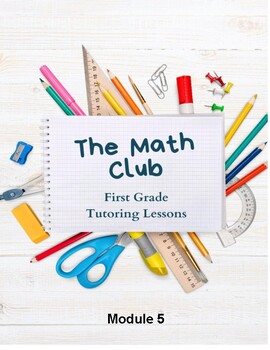The Math Club- First Grade 2D and 3D shapes
Robin Sellers
4 Followers
Grade Levels
1st
Subjects
Resource Type
Standards
CCSS1.OA.B.3
CCSS1.OA.B.4
CCSS1.OA.C.6
CCSS1.OA.D.7
CCSS1.OA.D.8
Formats Included
- PDF
Pages
33 pages
Robin Sellers
4 Followers
Description
This is the fifth module in a set of 10 for first grade. In this module students practice identifying the number of sides and edges in 2d and 3d shapes.
There are 16 lessons in this module. There is also a fluency activity for each lesson. Each lesson should take about 10 minutes.
The final lesson is a review of all the content covered in the module.
This is a great resource for small group instruction or tutoring sessions.
I also have modules for kindergarten-3rd graders.
Check out my store for more!
Total Pages
33 pages
Answer Key
N/A
Teaching Duration
N/A
Report this resource to TPT
Reported resources will be reviewed by our team. Report this resource to let us know if this resource violates TPT’s content guidelines.
Standards
to see state-specific standards (only available in the US).
CCSS1.OA.B.3
Apply properties of operations as strategies to add and subtract. If 8 + 3 = 11 is known, then 3 + 8 = 11 is also known. (Commutative property of addition.) To add 2 + 6 + 4, the second two numbers can be added to make a ten, so 2 + 6 + 4 = 2 + 10 = 12. (Associative property of addition.)
CCSS1.OA.B.4
Understand subtraction as an unknown-addend problem. For example, subtract 10 – 8 by finding the number that makes 10 when added to 8.
CCSS1.OA.C.6
Add and subtract within 20, demonstrating fluency for addition and subtraction within 10. Use strategies such as counting on; making ten (e.g., 8 + 6 = 8 + 2 + 4 = 10 + 4 = 14); decomposing a number leading to a ten (e.g., 13 - 4 = 13 - 3 - 1 = 10 - 1 = 9); using the relationship between addition and subtraction (e.g., knowing that 8 + 4 = 12, one knows 12 - 8 = 4); and creating equivalent but easier or known sums (e.g., adding 6 + 7 by creating the known equivalent 6 + 6 + 1 = 12 + 1 = 13).
CCSS1.OA.D.7
Understand the meaning of the equal sign, and determine if equations involving addition and subtraction are true or false. For example, which of the following equations are true and which are false? 6 = 6, 7 = 8 - 1, 5 + 2 = 2 + 5, 4 + 1 = 5 + 2.
CCSS1.OA.D.8
Determine the unknown whole number in an addition or subtraction equation relating three whole numbers. For example, determine the unknown number that makes the equation true in each of the equations 8 + ? = 11, 5 = ▯ - 3, 6 + 6 = ▯.





